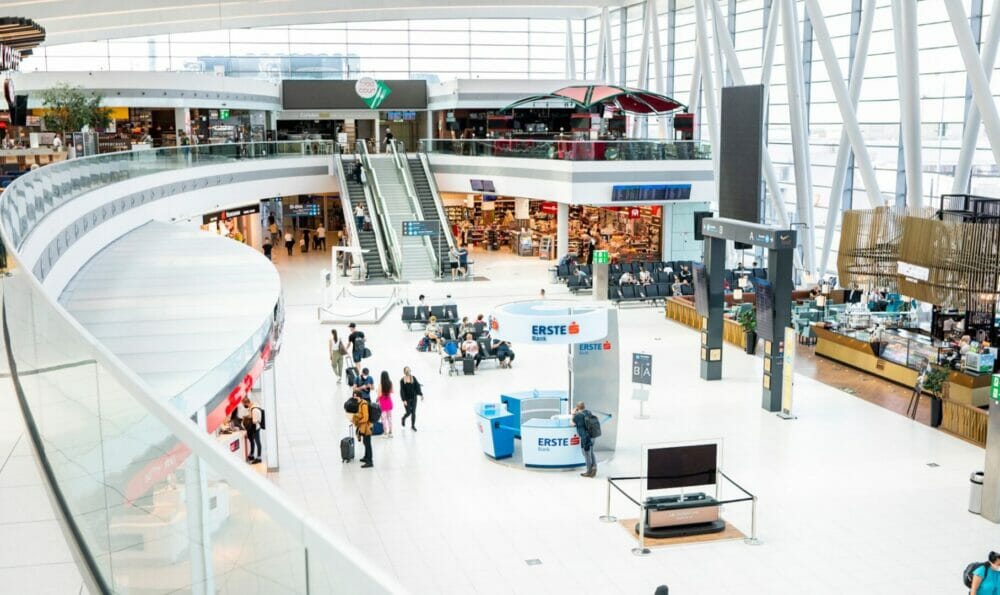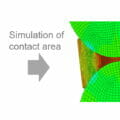In the words of Chinese philosopher Lao Tzu “The journey of a thousand miles begins with a single step”, and in the modern age of international travel, this first step is often an airport. With 16 million passengers passing through it in 2019, Budapest Airport is the biggest international airport in Hungary and a central hub for Southeastern Europe. However, the airport’s control and SCADA systems for operating critical infrastructure were aging and not standardized. Here’s how COPA-DATA helped.

Airports have sophisticated systems in place to handle air traffic and passenger operations. Planes are guided step by step to their gates and starting positions by air-ground light systems (AGLS). Checked baggage and cargo is dealt with by separate automated baggage handling systems (BHS) to ensure that all baggage is registered, inspected, and transported to the correct place.
Budapest Liszt Ferenc Airport (BUD) is the international airport of Hungary’s capital, located just ten miles from central Budapest. In 2019 it was used by over 16 million passengers, but it is also an international freight airport and serves military purposes, meaning that it must be fully operational all year round.
System heterogeneity
Since its opening in 1950, BUD has undergone frequent extensions, modernisation and redesigns. These changes have been carried out at varying time points and by different contractors, meaning that while some existing systems and installations have remained unchanged, its overall system landscape is very heterogenous. Because of this, the airport relies on several control systems for its AGLS and BHS.
“For operation and monitoring, we had a total of six Supervisory Control and Data Acquisition (SCADA) systems,” says Géza Kulcsár, control systems group leader at Budapest Liszt Ferenc International Airport. “No less than four were in use for the BHS alone.”
As these systems had all been implemented by different systems integrators for specific installations, they all only had interfaces and visualisations for each of their individual purposes. This not only led to inconsistency between the look and feel of the human-machine interfaces (HMIs) making operation less user-friendly, but also increased the risk of misinterpretation.
The variability between these applications also meant that maintenance staff needed to be trained on each system, but also had to rely on several different integrators for support and modifications, some of which were no longer in existence or unable to assist with airport installations. “Comparably simple tasks such as operating system updates frequently turned out to be formidable challenges,” Géza Kulcsár recalls. “Breakdowns of partial systems occurred regularly.”
Achieving standardisation
These challenges highlighted the need for system standardisation through unification of AGLS and BHS systems. Following evaluation of potential control systems, the SICAM-230 visualisation and control system was identified as the most stable and least error prone, the core of which is the zenon software platform from software manufacturer COPA-DATA. Géza Kulcsár turned to COPA-DATA to support the standardisation of BUD systems.
Firstly, the AGLS control systems were transformed, with all control technology and redundant units replaced, leaving only the power electronics untouched. The system had 30,000 data points be imported in a limited timeframe, and above this a superordinate control system was established using zenon with a gateway to the airfield radar system. “We only had six hours for the entire AGLS switchover and go-live and we performed it without external help,” explains Géza Kulcsár. “Thanks to zenon’s openness and easy handling, it was no hassle at all.”
Existing knowledge of SICAM-230 proved valuable, with only 16 minutes needed from importing the datapoint list to system commissioning, leaving plenty of additional time for testing. Additionally, zenon’s hot reload capability allowed further testing and simulation of modifications and rapid implementation of changes. These functions make annual upgrades to airport control systems straightforward and efficient.
Smart and flexible
The additional flexibility offered by zenon benefitted control system engineers at Budapest Airport as it provides native drivers and interfaces to over 400 third-party systems and components, making PLC, drive and sensor integration from a vast array of manufacturers simple.
zenon’s project design functions also provide high levels of flexibility based on the principle of ‘parameter setting, not programming’. The platform is equipped with libraries of Smart Objects, that operators can use to create pictures and functionalities reusable anywhere in the system and fully adaptable for each individual purpose through set parameters. These features can be stored and maintained centrally and all changes become effective in relevant sub-projects with no further action needed from the user.
The platform accelerates engineering work significantly, while also eliminating common issues and sources of error. When refurbishing the BHS it was found that some of the information in the system was incorrect, so a lot of work was done to create the datapoint list. “Using zenon, we were able to create the visualization for the BHS with its more than 1,000 conveyors in only two weeks,” Géza Kulcsár reports. “For its configuration, we used standard zenon as is and did not need to write a single line of code.”
Implementing zenon-based solutions has been highly efficient and effective in optimising airport operations and improving stability. Using the platform has reduced reliance on third-party support, while ensuring that less effort is needed to modify or adapt airport installations. Moving forward, there are plans to extend the systems to cover the airport’s automation and power supply systems. While airport operation is undoubtedly complex, zenon has made sure the first step of many international journeys is smooth and stress-free.
To find out more about COPA-DATA’s zenon platform, visit the website here.
Ends: 917 words
About COPA-DATA
COPA-DATA is an independent software manufacturer that specializes in digitalization for the manufacturing industry and energy sector. Its zenon® software platform enables users worldwide to automate, manage, monitor, integrate and optimize machines, equipment, buildings and power grids. COPA-DATA combines decades of experience in automation with the potential of digital transformation. In this way, the company supports its customers to achieve their objectives more easily, faster and more efficiently. The family-owned business was founded by Thomas Punzenberger in 1987 in Salzburg, Austria. In 2021, with more than 300 employees worldwide, it generated revenue of EUR 64 million.
Your contact persons:
Your COPA-DATA contact:
Shayde Bain
Marketing Manager
COPA-DATA UK Ltd
Suite 42, Fourth Floor, Greyfriars House
Greyfriars Road
Cardiff CF10 3AL
+44 (0) 2920 10 88 77








